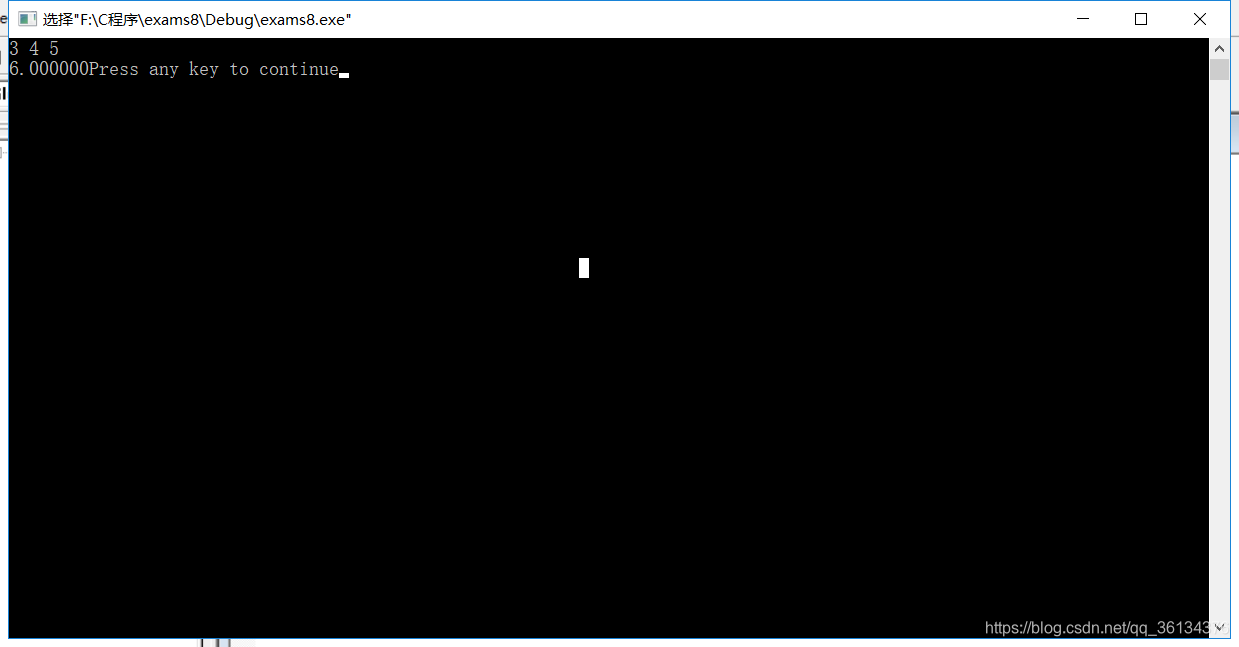C语言-求三角形面积
本文共 301 字,大约阅读时间需要 1 分钟。
一、代码
//三角形面积:(海伦公式)(p=(a+b+c)/2)//S=sqrt[p(p-a)(p-b)(p-c)]#include#include void main(){ double a,b,c; double p; double s; scanf("%lf%lf%lf",&a,&b,&c); if((a+b>c)&&(a+c>b)&&(b+c>a)){ p=(a+b+c)/2; s=sqrt(p*(p-a)*(p-b)*(p-c)); printf("%lf",s); } else printf("无法构成三角形"); }
二、结果

转载地址:http://xbch.baihongyu.com/
你可能感兴趣的文章
MySQL InnoDB事务隔离级别与锁机制深入解析
查看>>
Mysql InnoDB存储引擎 —— 数据页
查看>>
Mysql InnoDB存储引擎中的checkpoint技术
查看>>
Mysql InnoDB存储引擎中缓冲池Buffer Pool、Redo Log、Bin Log、Undo Log、Channge Buffer
查看>>
MySQL InnoDB引擎的锁机制详解
查看>>
Mysql INNODB引擎行锁的3种算法 Record Lock Next-Key Lock Grap Lock
查看>>
mysql InnoDB数据存储引擎 的B+树索引原理
查看>>
mysql innodb通过使用mvcc来实现可重复读
查看>>
mysql insert update 同时执行_MySQL进阶三板斧(三)看清“触发器 (Trigger)”的真实面目...
查看>>
mysql interval显示条件值_MySQL INTERVAL关键字可以使用哪些不同的单位值?
查看>>
Mysql join原理
查看>>
MySQL Join算法与调优白皮书(二)
查看>>
Mysql order by与limit混用陷阱
查看>>
Mysql order by与limit混用陷阱
查看>>
mysql order by多个字段排序
查看>>
MySQL Order By实现原理分析和Filesort优化
查看>>
mysql problems
查看>>
mysql replace first,MySQL中处理各种重复的一些方法
查看>>
MySQL replace函数替换字符串语句的用法(mysql字符串替换)
查看>>
mysql replace用法
查看>>